Audemars Piguet has always stood at the forefront of material technology, having championed the use of materials such as titanium, forged carbon and most notably, ceramic. Equally, the brand has mastered the art of finishing these materials to the same exacting standards as traditional metals such as steel and gold.
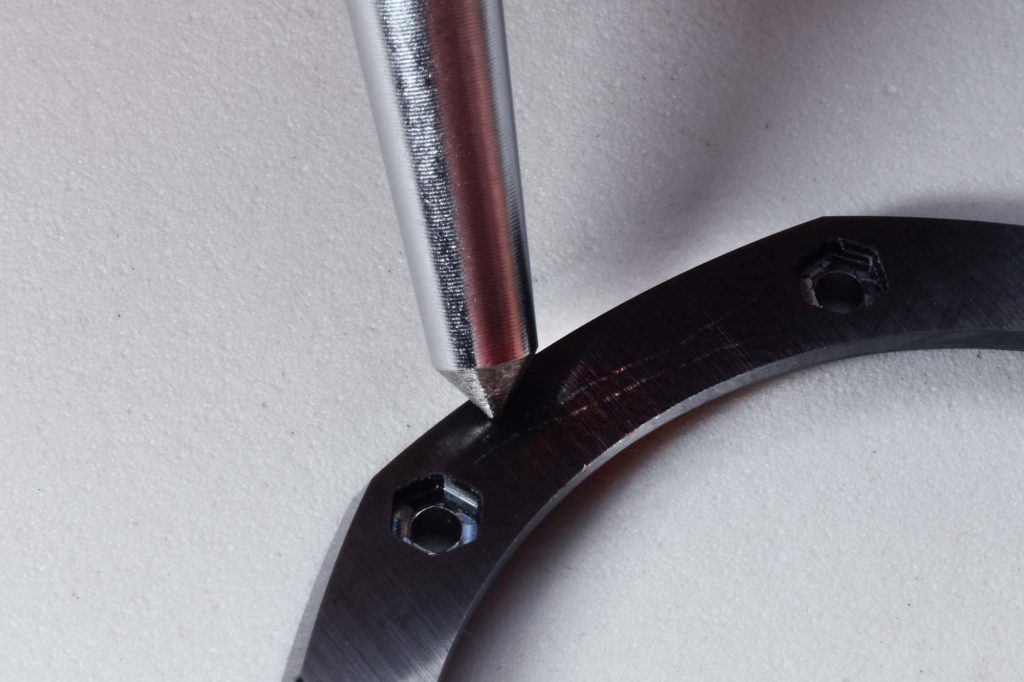
While ceramic has many outstanding properties including high scratch-resistance, it is notoriously difficult to manipulate due to its surface hardness. As such, ceramic watches are typically fully polished or sandblasted. In contrast, the ceramic watches from Audemars Piguet are finely executed with an alternating vertically brushed and mirror-polished finishing.
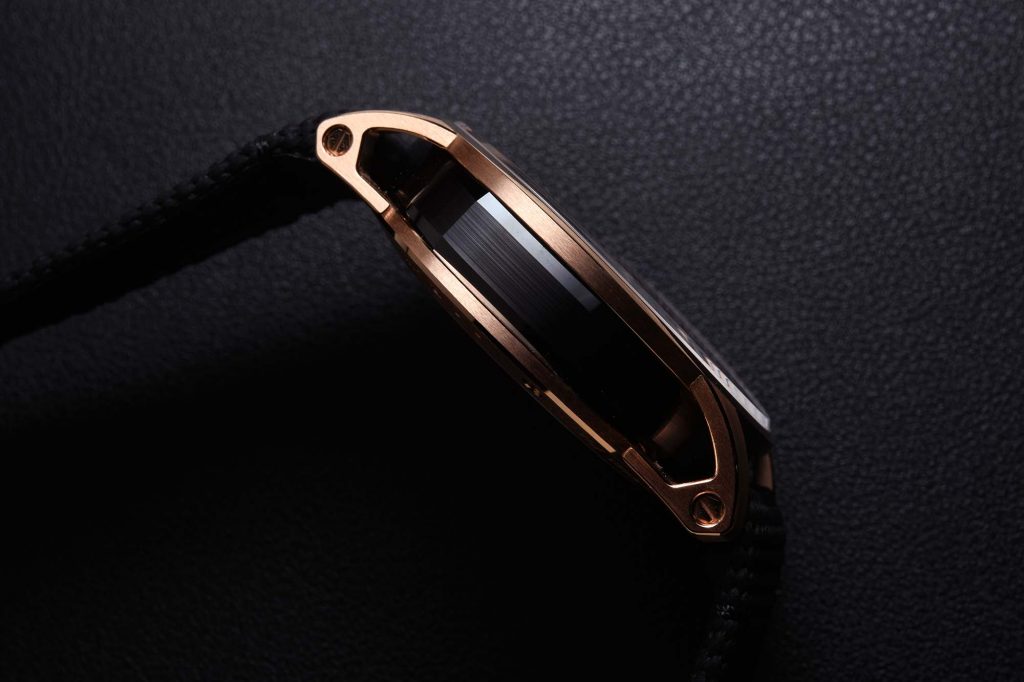
After experimenting with two-tone cases in the Code 11.59 collection beginning with the Tourbillon Openworked “Only Watch” 2019, the brand has now introduced ceramic into the mix with the latest Code 11.59 Selfwinding Chronograph, featuring a ceramic case middle.
Finely Executed Two-tone Case
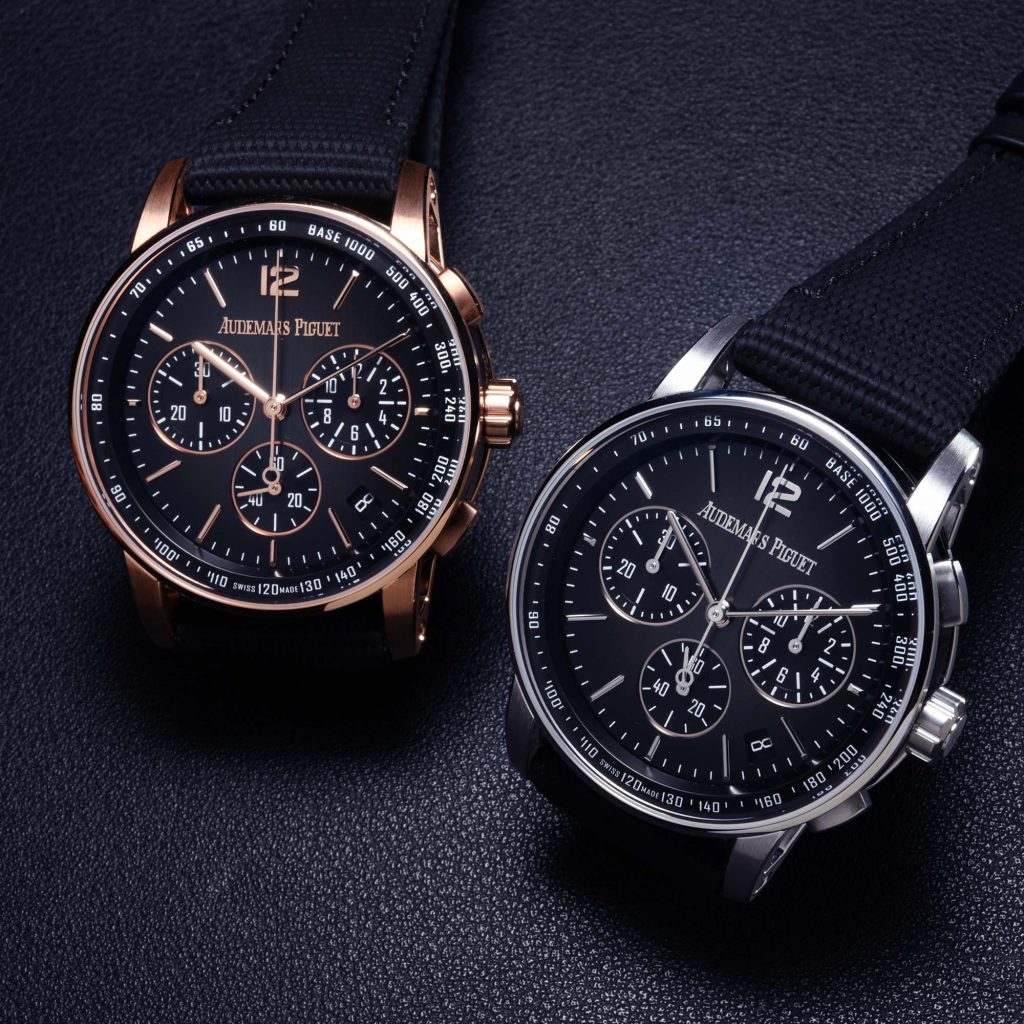
Without a doubt, the two-tone execution accentuates the highly nuanced construction that characterises the Code 11.59, whereas with a uniform case metal, the bulk of the architecture seems somewhat indistinct. In the new models, the circular bezel, case back and sculptural lugs are made of either white or pink gold while the recessed octagonal case middle is rendered in black ceramic. The high contrast emphasises the circular and angular surfaces of the case as well as helps break up its height, making the watch appear slimmer than it is.
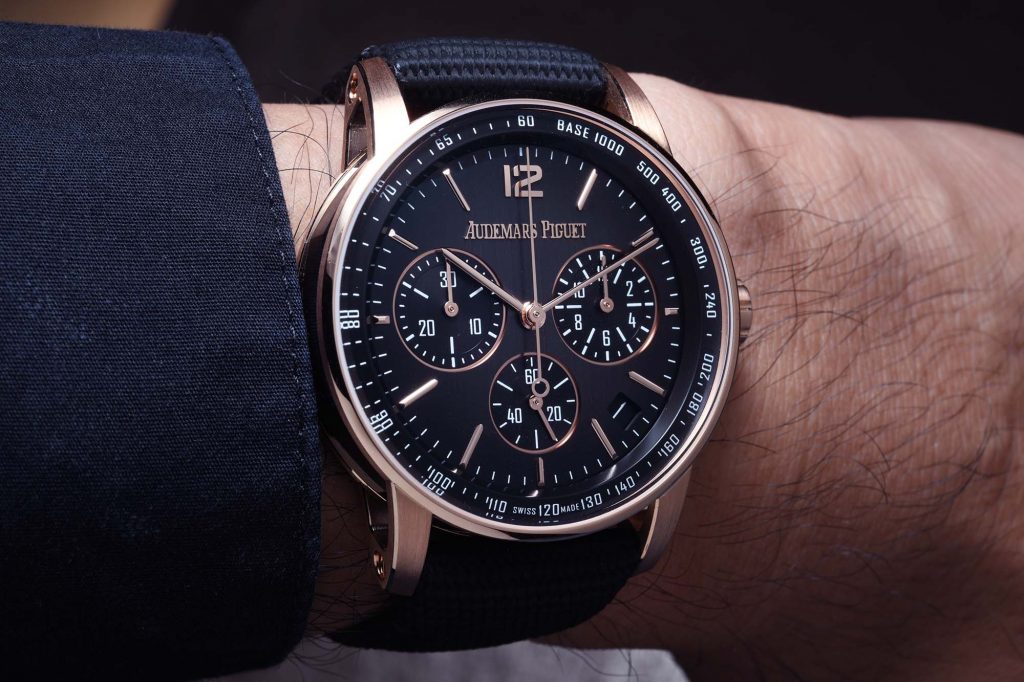
The finishing is everything we’ve come to expect from Audemars Piguet. It is predominantly satin-brushed while all angles are polished. The case middle also features distinct polished facets that serves to highlight its octagonal form.
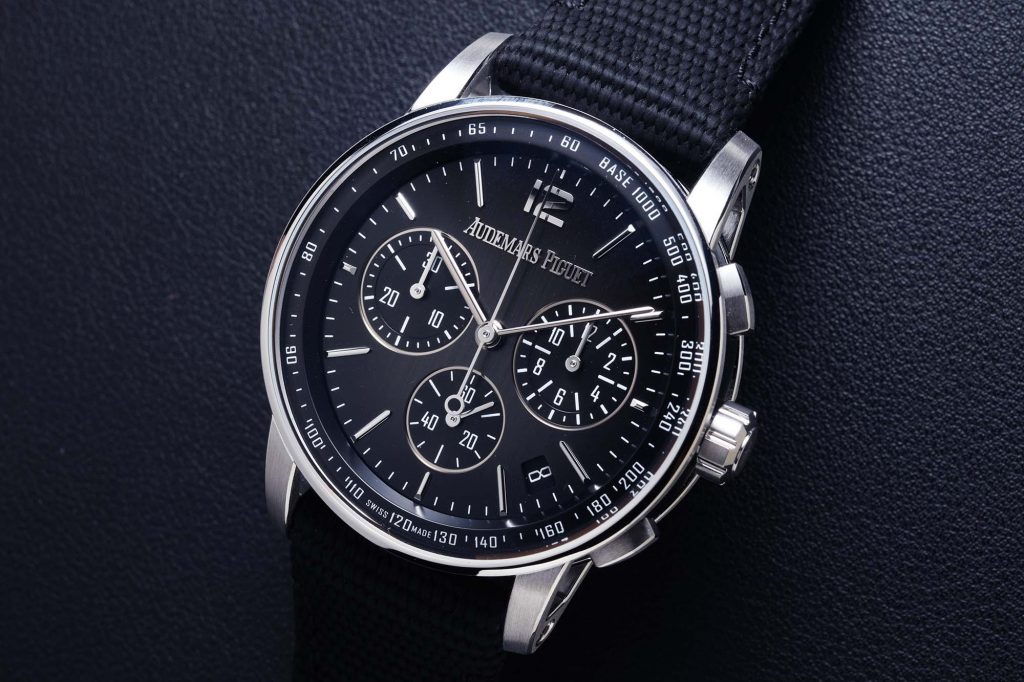
The case measures 41mm in diameter and is paired with a smoked dark grey dial, which has a vertically brushed finish, matching the case.
In-house Automatic Chronograph Movement
Powering the watch is the fully integrated, in-house automatic flyback chronograph cal. 4401, which is equipped with both a column wheel and vertical clutch. It is a relatively large movement that is classically solid in construction with several notable features.

Conventionally, automatic chronographs have the fourth wheel of the movement integrated in the vertical clutch assembly in the middle. However, in the cal. 4401, the fourth wheel is located at six o’clock, driving the running seconds counter directly, which in turn results in an indirectly driven chronograph seconds in the middle.
This layout frees up space in the central portion of the movement for the chronograph minutes and hour wheels as well as the automatic winding mechanism, keeping the movement as slim as possible. Additionally, it has a flyback mechanism with levers to reset the chronograph while running.

The case back view of the movement is particularly dense, as in contrast to most chronographs on the market including the Daytona 4130, the cal. 4401 relies on individual reset hammers and springs for each chronograph counter. The balance wheel is held in place by a full balance bridge, anchored on both ends for greater stability. The movement operates at a frequency of 4 Hz and offers a 70-hour power reserve.
While the majority of finishing is mechanically applied, the most visible part of the movement – the skeletonised oscillating weight – features hand-applied beveling with sharp internal angles.


